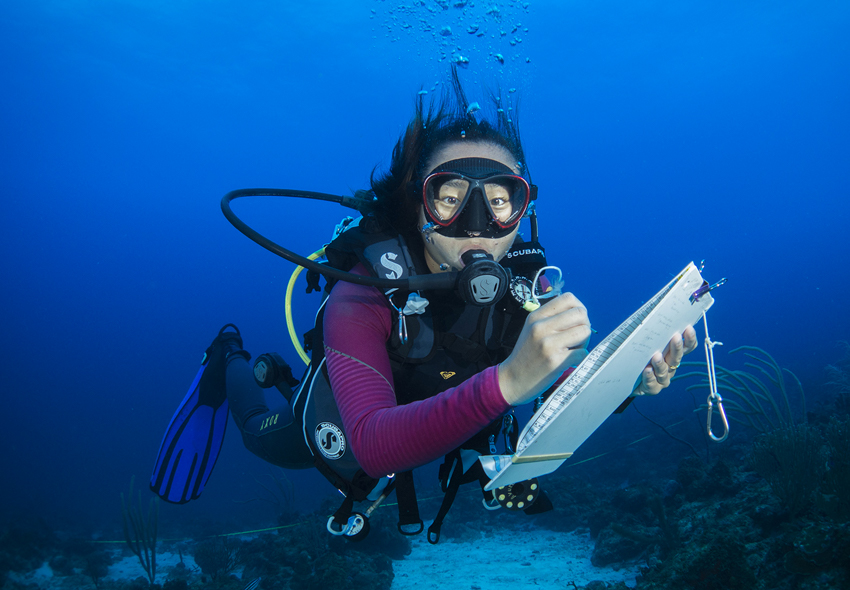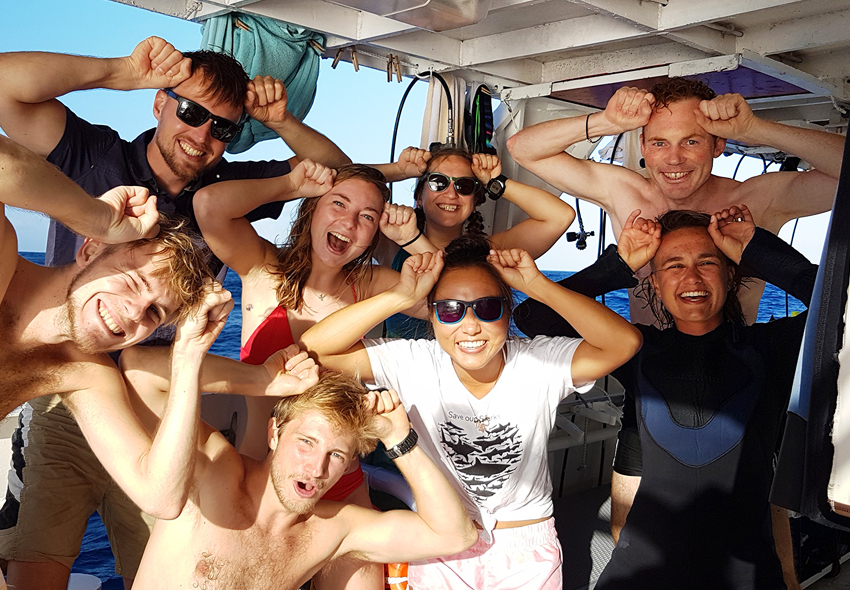Hammertime
23 November 2018 The team has reached the fourth day of the expedition, and we are all going strong with the data collection for the Saba Bank. Through rough weather, high waves, currents, rain and strong gusts of wind, it does not hold us back to the dives to collect data.
A DIVERSE FISH COMMUNITY
The first days we have collected fish survey data on the north and east side of the Saba Bank and today we have moved towards the south. Through the dives we have seen many different reef systems, some with very complex reef structures to flat reefs dominated by soft corals and sponges, as well as sand plains. It is amazing to see how diverse the Saba Bank is in terms of location and the fish populations. By collecting data on the fish communities we get an idea about how fish are supporting the healthiness of the reefs. With the three of us we swim out three different transects and we count as many fish as we can, all categorized by species and sizes. We generally see about 50 to 80 different species.
A SHARK'S PARADISE
Every dive is different and every dive brings us new surprises. The first couple of days we have been surrounded by horse-eye jacks, black jacks, yellow jacks, barracudas and many relatively small reef fishes. The great thing about diving on many different places on the Saba Bank, is that we are quite often surprised by different bigger fish species, such as sharks. As for now, at seven out of the nine dives, we have been visited by Caribbean reef sharks, nurse sharks and silky sharks.
INVASIVE LIONFISH
In addition to our fish survey, I try to find some time to catch lionfish, a widespread invasive species for the Caribbean. Together with Wageningen Marine Research we will look into the genetic connectivity of lionfish, stomach contents and tissue samples for stable isotope analyses. Finding lionfish so far seems to be pretty challenging. Most of the lionfish caught were at a depth of more than 25 meters.
A GREAT SURPRISE
Today (Wednesday we finished the day with a blast. Through the strong currents our group swam towards the anchor, eager to do our last dive of the day. Once we reached bottom, while catching our breaths, just a couple meters away from us a great hammerhead cruised by. All so surprised and mesmerized, holding our breaths to witness this great individual, we broke the silence with a cheer underwater. It was my very first great hammerhead and on the Saba Bank! Last but not least during our safety stop, in a curtain of bubbles from the second group, a 1.5-meter-long silky shark checked us out.
YARARI SANCTUARY
It is good to see sharks at every dive; it gives me a satisfying feeling of all the work we have put into shark science to protect these species. Since 2015 the Saba Bank and Saba have been acknowledged as a marine mammals and shark sanctuary, named Yarari. It is the first sanctuary of The Netherlands, protecting all the species inside the territorial waters of Saba, Bonaire and St. Eustatius. After long days in the sea we watch together the sun set and celebrate another successful day of science. Sleeping at sea is a challenge especially with ground seas, besides being rocked into sleep, you need to watch out to not fall out of bed. After beautiful days above and under water, as the Saba Bank Management Unit officer and science coordinator, I am very happy and proud to see how beautiful and full of life the Saba Bank is. I look forward to the upcoming days and all the beautiful experiences it will bring us, who knows what this large atoll will bring us in the upcoming days.
RELATED BLOGS NOV 2018
|
NOV 16 |
19 |
20 |
23 |
24 |
26 |
29 |
30 |
EXPEDITION SABA BANK III
NOV 2018

AYUMI KURAMAE IZIOKA
SABA CONSERVATION FOUNDATION


